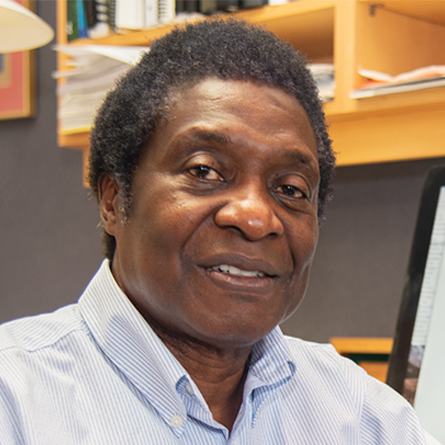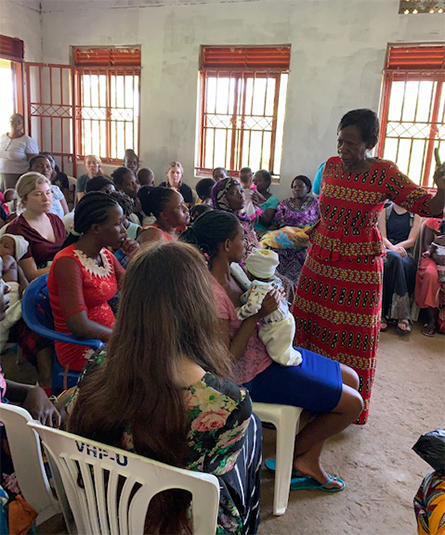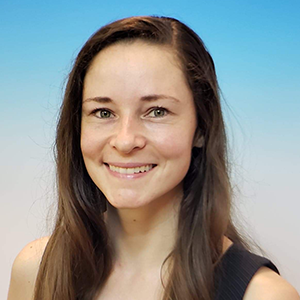
Parallel tracks: A nutritional biochemistry vision
While speaking of scarcity and excess, James M. Ntambi has a generous demeanor, like a host offering second helpings. Multiple times in a recent interview, after answering a question, he shared more:

and global health at the University of Wisconsin–Madison.
“One small thing I didn’t tell you before …”
Ntambi grew up and attended college in Uganda and then moved from Kampala to Baltimore after winning a Fulbright scholarship to do graduate work at Johns Hopkins University, where today he is an adjunct professor. He was studying a parasite threatening horses and cattle for his Ph.D. and already developing a connection to the American Society for Biochemistry and Molecular Biology. (He now serves on the ASBMB Council.)
“My first two major publications as a graduate student were actually in the Journal of Biological Chemistry,” he said.
His plan was to return to Uganda when he finished his degree.
“The chair of the department of biological chemistry approached me (and said), ‘I hear you are going back to Africa,’” Ntambi said. The chair made an offer: How about a postdoctoral fellowship?
Offers to that effect have repeated themselves over Ntambi’s 35-year academic career — but they haven’t stopped him from returning to Uganda.
In fact, he’s made a point of it.
In community clinics, something clicked
As a professor at the University of Wisconsin–Madison for the last three decades, Ntambi teaches nutritional biochemistry and global health. When visiting villages in rural Africa as part of the Uganda Program he started, UW faculty and students “saw things they would never have expected,” he said. “Malaria, of course,” in low-income settings, but also diabetes and hypertension.
His students were there to learn how conditions related to nutrition are diagnosed. For a severe protein deficiency called kwashiorkor, “What do these kids look like?”
But the visits reflected a change that has been growing worldwide since Ntambi moved to the United States.
It’s called “the double burden” of malnutrition, recently reported on in the Lancet Global Health. Even in remote areas, malnutrition in many forms now is seen alongside diet-related noncommunicable diseases (such as diabetes and hypertension) within households or communities. Some people even experience both kinds of disease during their lifetime.

participate in a pediatric nutrition clinic in the summer of 2019 at the Lweza–Mukono
Center for Community Health Initiatives.
“We see undernutrition and overnutrition,” Ntambi said.
As in the United States, trends are evidence of systemic change. Social drivers and availability are factors. Globalization, highly processed foods and working lifestyles all contribute to what the World Health Organization calls a “nutrition transition.” Plus, older people are more likely to have noncommunicable diseases, and economic prosperity often signals a shift from infectious disease to noncommunicable disease.
Combating the double burden
Ntambi wanted to use his biochemistry background in community settings, not only in a lecture theater or lab. “You begin to address these issues, when you come back here, more effectively,” he said.
After running community clinics, he began to apply his biochemistry background on the ground.
“The idea was to follow up these diseases that could be prevented,” he said — for example, by advising a person with elevated blood sugar on dietary changes before they became “fully diabetic.”
Ntambi’s efforts in East Africa, especially a nongovernmental organization he helped to create, are akin to global responses to the double burden. According to the WHO, nutrition education is among a suite of approaches that offer double returns, reducing wasting, stunting and deficiency of micronutrients, as well as Type 2 diabetes, cardiovascular disease and cancer.
Community education was Ntambi’s vision, and it made excellent use of his expertise; over his career, the scientist has published more than 200 scientific papers on biochemistry and nutrition.
And that postdoctoral fellowship he took all those years ago? It was, in fact, in lipid metabolism.
Applying a scientific research track
Ntambi’s favorite gene is SCD1. It helps the body process dietary carbohydrates, gathering that energy into monounsaturated fatty acids for storage. How? The SCD1 gene has instructions to make a protein called stearoyl-CoA desaturase. That protein (an enzyme) converts fatty acids palmitate and stearate into the most common fatty acids in triglycerides (palmitoleate and oleate, respectively). Ntambi and a team of researchers found that when one has plenty of leptin, a hormone that makes one feel full, the body makes less SCD1. As a result, the body makes less fat and tends to lose weight.
Ntambi found that genetically altered mice unable to make the SCD1 protein didn’t make much fat even when given a carbohydrate-rich diet. A paper on this was cited over 1,000 times, and Ntambi then moved on to how different tissues are involved: skin, liver, adipose, muscle, intestine, heart and brain.
“This is a very good example of a diet–gene interaction,” Ntambi wrote.
Combating the brain drain
Ntambi is aware of not only the nutritional double burden but also the brain drain in Africa. He sees too few resources for basic research back home, and he is working to change that.
A decade ago, inspired by initiatives in economics and public health, Ntambi and others (including Richard Deckelbaum, a pediatric gastroenterologist at Columbia University) laid the groundwork for excellence in biochemistry and nutrition research in East Africa through an initiative for Ph.D. students.
It’s called the African Nutritional Sciences Research Consortium. There’s good news and bad news. With no shortage of ideas, this endeavour is not unlike the double burden: plenty alongside scarcity. “Funding … COVID … Everything is in place,” Ntambi said.
“The basic principle remains: Build local capacity. Produce graduates locally. Avoid the brain drain.”
Enjoy reading ASBMB Today?
Become a member to receive the print edition four times a year and the digital edition monthly.
Learn moreGet the latest from ASBMB Today
Enter your email address, and we’ll send you a weekly email with recent articles, interviews and more.
Latest in People
People highlights or most popular articles

In memoriam: Michael J. Chamberlin
He discovered RNA polymerase and was an ASBMB member for nearly 60 years.

Building the blueprint to block HIV
Wesley Sundquist will present his work on the HIV capsid and revolutionary drug, Lenacapavir, at the ASBMB Annual Meeting, March 7–10, in Maryland.

In memoriam: Alan G. Goodridge
He made pioneering discoveries on lipid metabolism and was an ASBMB member since 1971.

Alrubaye wins research and teaching awards
He was honored at the NACTA 2025 conference for the Educator Award and at the U of A State and National Awards reception for the Faculty Gold Medal.

Designing life’s building blocks with AI
Tanja Kortemme, a professor at the University of California, San Francisco, will discuss her research using computational biology to engineer proteins at the 2026 ASBMB Annual Meeting.

Jordahl named Gilliam Fellow
He will receive three years of funding to support his thesis research.

